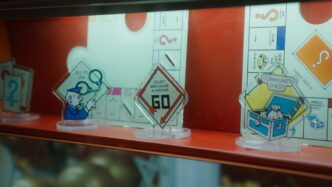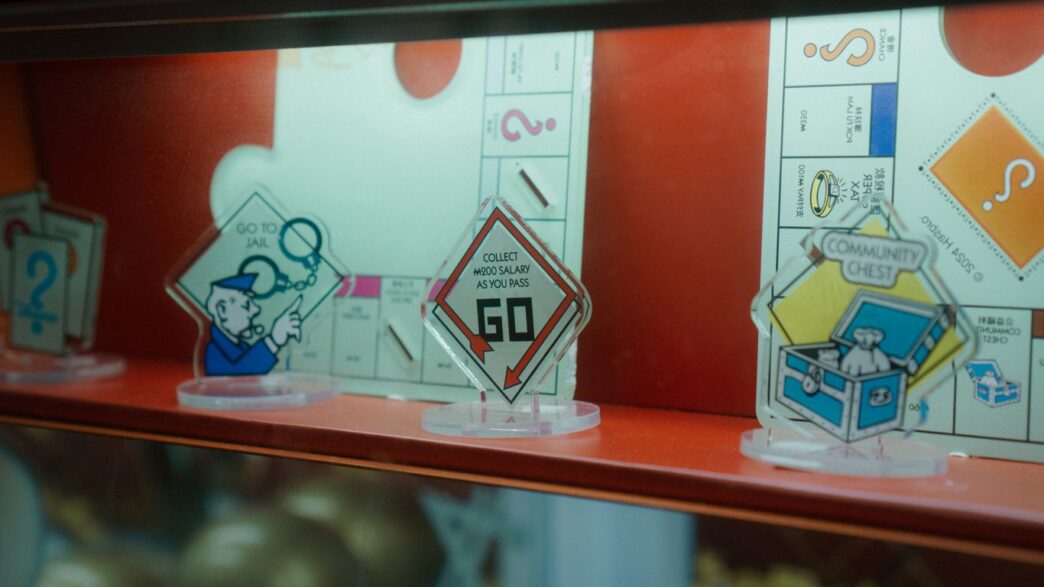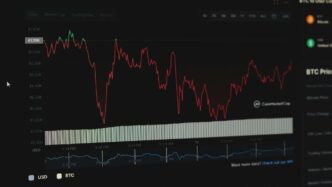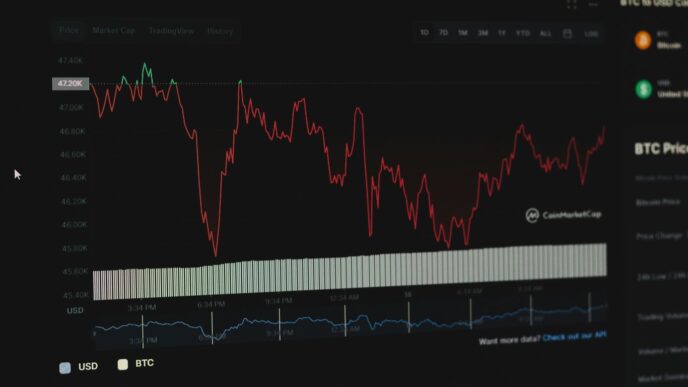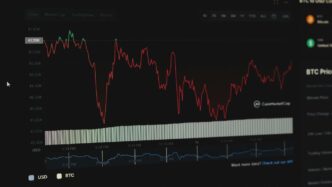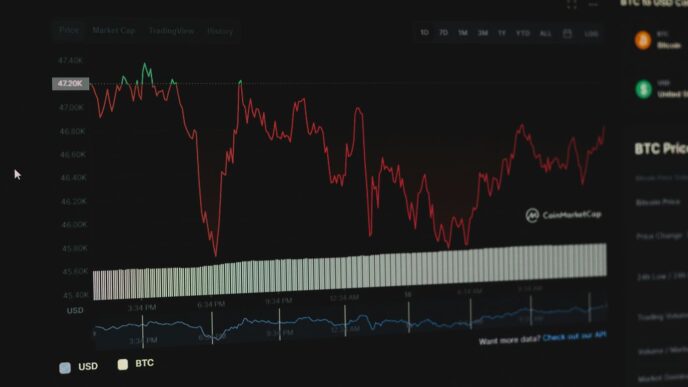The idea of a big merger between Quest Diagnostics and Labcorp has been floating around, and it’s got people talking. Imagine two giants in the lab testing world joining forces – what would that even look like? It’s not just about two companies getting bigger; it’s about how this quest Labcorp merger could change things for hospitals, doctors, and most importantly, for us. We’re going to break down the reasons why this might happen and what it could mean for the future of medical testing.
Key Takeaways
- Companies are looking to combine to deal with lower payments from insurance and to use new technology better. It’s also about making it easier for customers to get all their tests done in one place.
- When labs join together, they can often save money by doing things more efficiently, like standardizing equipment and processes, and managing staff smarter. Centralizing operations can also simplify dealing with regulations.
- New technology, like robots and better computer systems, is a big part of why labs are consolidating. These tools can help make tests more accurate, manage data well, and open doors for future growth.
- A merger would significantly change the competitive scene. With Quest and Labcorp being major players, their combination would create a dominant force, impacting how other labs operate and compete.
- For patients, this kind of merger could mean more accurate tests, quicker access to new diagnostic methods, and better availability of specialized testing, ultimately aiming for improved healthcare.
Strategic Drivers For The Quest Labcorp Merger
Addressing Declining Reimbursement Rates
The healthcare landscape is constantly shifting, and for diagnostic labs, that often means dealing with lower payments from insurance companies and government programs. It’s a tough reality that puts pressure on profits. Companies like Quest and Labcorp are feeling this squeeze, and it’s a big reason why they might be looking to join forces. By combining, they could gain more negotiating power with payers, potentially leading to better reimbursement rates. Think of it like two smaller stores merging to become one big supermarket – they can probably get better deals from their suppliers and, in turn, maybe charge a bit less or at least keep their prices more stable.
Here’s a look at how this plays out:
- Increased Bargaining Power: A larger entity can negotiate more effectively with insurance providers, potentially securing more favorable reimbursement terms for tests.
- Economies of Scale: Merging operations can lead to reduced per-test costs, helping to offset lower reimbursement rates.
- Diversification of Revenue: Combining different service lines and geographic reach can spread risk and create more stable income streams.
The constant pressure from declining reimbursement rates is a significant factor pushing large diagnostic companies towards consolidation. It’s a strategic move to maintain profitability in a challenging economic environment.
Leveraging Technological Advancements
Technology is changing how diagnostic tests are done, and it’s happening fast. We’re seeing more automation, better data management systems, and even AI starting to play a role. For Quest and Labcorp, keeping up with these changes requires significant investment. A merger could pool resources, allowing them to invest more heavily in cutting-edge technology and automation, which can improve accuracy and speed up results. Imagine being able to afford the latest, fanciest lab equipment or hire top AI talent when you’re part of a much bigger company. It just makes more sense financially and strategically.
- Investing in Automation: Combining forces allows for greater investment in robotic systems and automated processes, leading to higher throughput and fewer errors.
- Data Management Systems: A unified approach to Laboratory Information Systems (LIS) can improve data flow, analysis, and reporting across the entire organization.
- AI and Machine Learning: Pooling data and expertise can accelerate the development and implementation of AI-driven diagnostic tools.
Meeting Customer Demand For One-Stop Shopping
Doctors and patients are increasingly looking for convenience. They want to be able to get all their diagnostic needs met by one provider, rather than having to deal with multiple labs for different types of tests. This trend towards ‘one-stop shopping’ is a powerful driver for consolidation in the lab industry. If Quest and Labcorp merge, they can offer a much broader menu of tests and services under one roof, making it easier for healthcare providers to manage their patients’ diagnostic needs. It simplifies things for everyone involved, from the doctor ordering the test to the patient getting it done.
- Expanded Test Menus: Offering a wider range of routine, specialized, and genetic tests from a single provider.
- Integrated Services: Combining different lab services, like clinical diagnostics and drug development support, into a cohesive package.
- Provider Convenience: Simplifying the ordering and reporting process for healthcare professionals by dealing with a single, larger entity.
Operational Efficiencies And Cost Savings

When big labs like Quest Diagnostics and Labcorp think about joining forces, a huge part of the conversation is about how they can run things more smoothly and save some serious cash. It’s not just about getting bigger; it’s about getting smarter with how they do things.
Streamlining Service Lines And Standardizing Operations
Imagine a giant kitchen where different chefs are all making slightly different versions of the same dish. It’s messy, wasteful, and confusing. Merging labs means tidying up these "kitchens." They can look at all the different tests and services they offer and figure out the best way to do each one, maybe in just one place. This means using the same machines for the same tests across the board, and having a clear, consistent way of handling samples from the moment they arrive to when the results go out. It’s all about cutting out the duplicate work and making sure everyone’s following the same, most effective playbook.
- Consolidating similar tests into specialized "centers of excellence."
- Standardizing equipment and testing methods to reduce variation and improve reliability.
- Developing common protocols for sample handling, processing, and quality control.
By focusing on doing things the best way, and doing them in fewer places, the combined company can cut down on wasted resources and speed up how quickly they get results back to doctors and patients.
Optimizing Staffing Through Productivity Metrics
Running a lab is a lot like managing a busy factory floor. You need the right number of people doing the right jobs at the right time. When labs merge, they get a chance to look at all their staff and figure out how to use them most effectively. This isn’t about just cutting jobs, though that can happen. It’s more about understanding how many tests each person or team can handle and making sure workloads are balanced. They can use data to see where things are running smoothly and where there might be bottlenecks. This helps them plan for the future, especially as more people retire or move on, without having to hire a ton of new folks just to keep up with demand.
- Establishing clear targets for tests processed per hour per employee.
- Using attrition to manage workforce size rather than layoffs.
- Cross-training staff to handle multiple roles within a standardized workflow.
Reducing Regulatory Complexity With Centralized Operations
Dealing with all the rules and regulations for running a lab can be a headache, especially if you have labs in different towns or states. Each place might have its own set of requirements. When Quest and Labcorp combine, they can aim to have fewer locations, which means fewer sets of rules to follow. Instead of juggling multiple licenses and reporting requirements, they can focus on one main set of standards. This simplifies things a lot, freeing up time and resources that were previously spent just on compliance paperwork. This simplification can lead to quicker adoption of new processes and a sharper focus on the actual science of testing.
- Consolidating licenses and permits to a central authority.
- Implementing a unified compliance strategy across all facilities.
- Reducing the overhead associated with managing multiple regulatory environments.
Impact Of Technology On Consolidation
Automation and Robotics for Improved Accuracy
Think about how much faster and more precise things can get when machines do the repetitive work. In labs, this means fewer mistakes. Automation can handle sample processing, testing, and even data entry, which cuts down on human error. This is a big deal when you’re dealing with thousands of tests a day. Consolidation allows for the investment in these advanced automated systems that smaller, individual labs might not be able to afford. It means better quality control and more reliable results for patients.
Laboratory Information Systems for Enhanced Data Management
Managing all the data from a huge lab operation is no small feat. That’s where Laboratory Information Systems (LIS) come in. A good LIS acts like the central nervous system for the lab. It tracks samples from the moment they arrive, manages test orders, stores results, and helps with reporting. When Quest and Labcorp merge, integrating their LIS systems will be key. This unified system can provide a clearer picture of operations, help identify trends, and make it easier to share information with doctors and hospitals. It’s all about making sure the right data gets to the right place, quickly and securely.
The Role of Emerging Technologies in Future Growth
Beyond automation and LIS, there’s a whole world of new tech on the horizon. Things like artificial intelligence (AI) and machine learning are starting to show up in diagnostics. AI can help analyze complex data sets, spot patterns that humans might miss, and even predict disease outbreaks. For a merged Quest-Labcorp, adopting these technologies early could mean a significant competitive edge. It opens doors to new types of tests and more personalized medicine. Plus, with a larger scale, they’ll have the volume to justify the costs associated with developing and implementing these cutting-edge tools. It’s about staying ahead of the curve and offering the most advanced diagnostic services possible.
Competitive Landscape And Market Positioning

Quest Diagnostics’ Market Share and Strengths
Quest Diagnostics is a major player in the diagnostic testing world, holding a significant chunk of the market. They’ve been really focused on getting better through things like automation and updating their computer systems. Plus, they’re not afraid to buy other companies, like that LifeLabs deal in Canada, which really boosted their reach. They’re also teaming up with places like WHOOP and Oura, which taps into that growing trend of people wanting to check their health from home. It seems like they’re really trying to be a leader in areas like cancer testing and figuring out Alzheimer’s.
- Strong presence in advanced diagnostics (oncology, Alzheimer’s).
- Focus on high-growth areas like heart health and autoimmune diseases.
- Partnerships with consumer health brands for at-home testing.
- Investing in IT modernization for better data handling.
Labcorp’s Dominance and Strategic Moves
Labcorp is the big dog in this industry, holding a much larger market share than Quest. They’ve been making strategic moves to keep their top spot. The diagnostic testing field itself is changing fast, with new tech like AI and wearables becoming more common. Labs are having to adapt to keep up, especially with different rules and regulations coming into play.
The diagnostic testing market is expected to keep growing, driven by more people dealing with long-term illnesses and the move towards getting care closer to home. This means labs need to be flexible and ready to offer new kinds of tests.
The Quest Labcorp Merger’s Impact on Market Dynamics
If Quest and Labcorp were to merge, it would really shake things up. It would create an even bigger giant in the lab testing space. Customers, especially big healthcare systems, are looking for places that can do it all – a "one-stop shop." This kind of consolidation could mean fewer choices for some, but potentially better prices or more integrated services for others. It’s a complex situation with a lot of moving parts, and how it plays out will depend on many factors, including how well they can combine their operations and technology.
- Potential for a dominant market leader.
- Increased pressure on smaller competitors.
- Shift in customer expectations towards integrated services.
- Opportunities for greater efficiency and cost savings through scale.
Potential Benefits For Patient Care
When two big players like Quest Diagnostics and Labcorp join forces, it’s not just about business numbers. There’s a real chance this could mean better healthcare for all of us. Think about it: with more resources and a wider reach, they can do some pretty neat things.
Enhancing Diagnostic Accuracy And Availability
One of the biggest wins from a merger like this could be making sure tests are more accurate and available when and where people need them. Imagine fewer errors because labs are using the latest, most reliable equipment and methods. Plus, with a larger network, getting your tests done might become easier, even in areas that were previously underserved. This means quicker results, which can be super important for starting the right treatment sooner.
- Standardized testing protocols across all facilities.
- Investment in cutting-edge diagnostic equipment.
- Expanded testing menus to cover more conditions.
- Improved logistics for sample transport to minimize delays.
A consolidated entity can invest more heavily in quality control measures and advanced technology that might be too expensive for a single, smaller lab. This can lead to more consistent and reliable results, which is what doctors and patients depend on.
Facilitating Introduction Of New Technologies
The world of medical diagnostics is always changing. New tests and technologies pop up regularly, promising better ways to detect diseases. For a merged company with deeper pockets and more labs, it’s easier to bring these new innovations onboard. They can afford the upfront costs of new equipment and the training needed for staff to use it properly. This means patients could get access to the latest diagnostic tools much faster than if they had to wait for individual labs to adopt them.
Improving Access To Specialized Testing
Sometimes, specific tests are only available at a few specialized labs. This can be a real problem if you live far away or if those labs are already swamped. A merger could help fix this by spreading these specialized services across a wider geographic area. It might also mean that more complex tests, which require special equipment or highly trained staff, become more accessible to a larger number of people. This could make a big difference for patients with rare conditions or those needing advanced diagnostic workups.
Challenges And Considerations For Consolidation
So, merging two giants like Quest Diagnostics and Labcorp sounds like a big deal, right? And it is. While the idea of streamlining things and saving money is appealing, there are definitely some hurdles to jump over. It’s not just about putting two companies together and expecting magic to happen.
Maintaining Quality Amidst Scale
When you get really big, keeping an eye on the little details can become tricky. Think about it: more samples, more tests, more people. The biggest worry is that quality could slip if things aren’t managed just right. It’s easy to lose that personal touch or overlook a small error when you’re dealing with such a massive operation. You need solid systems in place to catch issues before they become problems.
- Implementing robust quality control checks at every stage.
- Regular audits and performance reviews of all lab sites.
- Investing in ongoing training for all staff, no matter their role.
The sheer volume of work in a consolidated lab can put a strain on existing processes. It requires a proactive approach to quality management, not just a reactive one.
Managing Integration Of Diverse Operations
Quest and Labcorp aren’t exactly identical twins. They have their own ways of doing things, their own technology, and their own company cultures. Merging all that can be like trying to mix oil and water sometimes. You’ve got to figure out how to get all these different pieces working together smoothly.
- Standardizing IT systems: This is a huge one. Getting all the lab information systems talking to each other is key.
- Harmonizing workflows: Different labs might have different steps for the same test. These need to be aligned.
- Cultural integration: Helping employees from both companies feel like they’re part of one team is vital for morale and productivity.
Ensuring Data Security And Interoperability
In today’s world, patient data is super sensitive. When you combine two huge databases, you’ve got a bigger target for cyber threats. Plus, making sure different computer systems can actually share information (that’s interoperability) is a massive technical challenge. If systems can’t talk to each other, it can slow down everything from getting test results to doctors to managing patient records.
- Robust cybersecurity measures: This means firewalls, encryption, regular security updates, and employee training on data protection.
- Developing clear data governance policies: Who can access what data, and under what circumstances?
- Investing in interoperable technology: Choosing systems that are designed to work with other platforms is a must for the future.
Wrapping It Up
So, what’s the takeaway from all this talk about Quest and Labcorp potentially joining forces? It seems like a big move, and honestly, it’s hard to say exactly how it will all shake out. On one hand, bigger labs could mean better access to new tech and maybe even lower costs for some tests, which sounds good. But then you’ve got to wonder about things like keeping quality high and making sure results still come back fast. It’s a complicated puzzle with a lot of pieces, and the real impact will probably only become clear over time as we see how any changes play out for patients and doctors alike.

